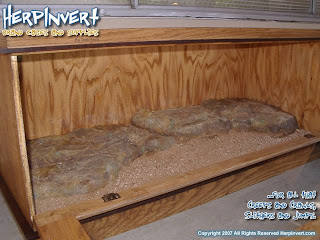The Ultimate Guide to Bearded Dragon Outdoor Cage: Everything You Need to Know
Introduction
Bearded dragons are one of the most popular pet lizards due to their friendly nature and easy-to-care-for needs. They’re also great pets for novice reptile owners. Naturally, you want to provide the best habitat possible for your bearded dragon. In this article, you’ll learn everything you need to know about creating an outdoor cage for your beloved pet.
Reasons to Create an Outdoor Cage for your Bearded Dragon
- Simulating the natural sunlight and fresh air that bearded dragons need to thrive.
- Providing more space for your bearded dragon to explore and exercise, which can improve their overall health.
- Giving your bearded dragon the opportunity to experience new sights, sounds, and smells that can simulate the natural habitat of wild bearded dragons.
- Reducing the risk of respiratory infections that can occur when bearded dragons live in captivity indoors.
What to Consider When Building an Outdoor Cage for Your Bearded Dragon
Size
The size of your outdoor cage will depend on the size of your bearded dragon. Ideally, it should be at least twice the length of your bearded dragon and at least one and a half times as wide. If you have multiple bearded dragons, you’ll need to make sure that the cage is large enough for all of them to live comfortably.
Location
When choosing a location for your outdoor cage, consider the following:
- Avoid placing the cage in direct sunlight for more than a few hours per day, especially if you live in a hot climate. Bearded dragons need access to shade to regulate their body temperature and avoid dehydration.
- Make sure the cage is protected from high winds, rain, and extreme temperatures.
- Ensure that the location is secure, with no predators or potential hazards nearby.
Materials
You’ll need the following materials to build your bearded dragon’s outdoor cage:
- Wood or PVC piping for the frame of the cage.
- Wire mesh or netting to prevent your bearded dragon from escaping and protect them from predators.
- A water-resistant cover to protect your bearded dragon from the elements.
- UVB lighting to replace the natural sunlight your bearded dragon would receive outside.
How to Care for Your Bearded Dragon in an Outdoor Cage
Bearded dragons have specific care needs that you’ll need to address when creating their outdoor cage. Here are some best practices to follow:
Feeding
Bearded dragons are omnivores, meaning they eat both plants and insects. You’ll need to provide a balanced and varied diet that includes:
- Leafy greens such as mustard greens or collard greens.
- Squash, carrots, or sweet potato.
- Crickets, mealworms, or waxworms.
You can also give your bearded dragon supplements such as calcium and vitamin D3 to ensure they’re getting all of the necessary nutrients.
Water
Provide fresh, clean water for your bearded dragon at all times. You can use a shallow dish or a water bottle designed for reptiles.
Temperature and Lighting
Bearded dragons require a basking area where they can lay under intense heat to regulate their temperature. The basking area should be between 100 and 110 degrees Fahrenheit. The rest of the cage should be cooler, with a temperature range of 75 to 85 degrees. To simulate natural sunlight, you’ll need to provide a UVB light source for your bearded dragon, which should be on for 12 to 14 hours per day.
Cleaning
Regular cleaning of your bearded dragon’s outdoor cage is important to remove waste and prevent bacteria growth. Spot clean daily by removing feces and uneaten food. Deep clean once a month by washing the entire cage with a reptile-safe cleaner.
Conclusion
Creating an outdoor cage for your bearded dragon can provide many benefits for their health and well-being. By following these best practices, you can create a safe and comfortable living environment for your beloved pet.





